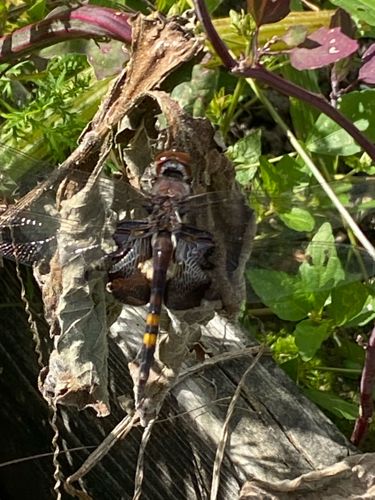Dragonfly
Scientific Name: Libellulidae (Skimmers) - likely a species within this family, possibly a widow skimmer (Libellula luctuosa) or similar.
Order & Family: Order: Odonata, Family: Libellulidae
Size: Adult dragonflies in the family Libellulidae generally range from 3 to 7 cm (1.2 to 2.8 inches) in body length, with wingspans of 5 to 11 cm (2 to 4.3 inches).

Natural Habitat
Typically found near freshwater bodies such as ponds, lakes, rivers, and wetlands. They require aquatic environments for their larval (nymph) stage and open areas with vegetation for hunting as adults.
Diet & Feeding
Both adult dragonflies and their aquatic nymphs are predatory. Adults primarily feed on other flying insects, including mosquitoes, flies, gnats, and sometimes smaller butterflies and moths, caught in flight. Nymphs feed on aquatic invertebrates like mosquito larvae, tadpoles, small fish, and other insect larvae.
Behavior Patterns
Dragonflies are expert flyers, capable of rapid acceleration, hovering, and flying backward. They are diurnal and hunt by sight. Males often establish and defend territories, particularly near breeding sites. Mating occurs in flight for many species. Females lay eggs in or near water. Their life cycle includes an aquatic nymph stage that can last from months to several years, followed by emergence as a terrestrial adult.
Risks & Benefits
Dragonflies are highly beneficial insects. They are significant predators of pest insects like mosquitoes and flies, helping to control their populations, which can reduce the transmission of diseases. They pose no risk to humans; they do not bite or sting. They are also excellent bioindicators of healthy freshwater ecosystems due to their sensitivity to water quality and habitat degradation.
Identified on: 9/7/2025